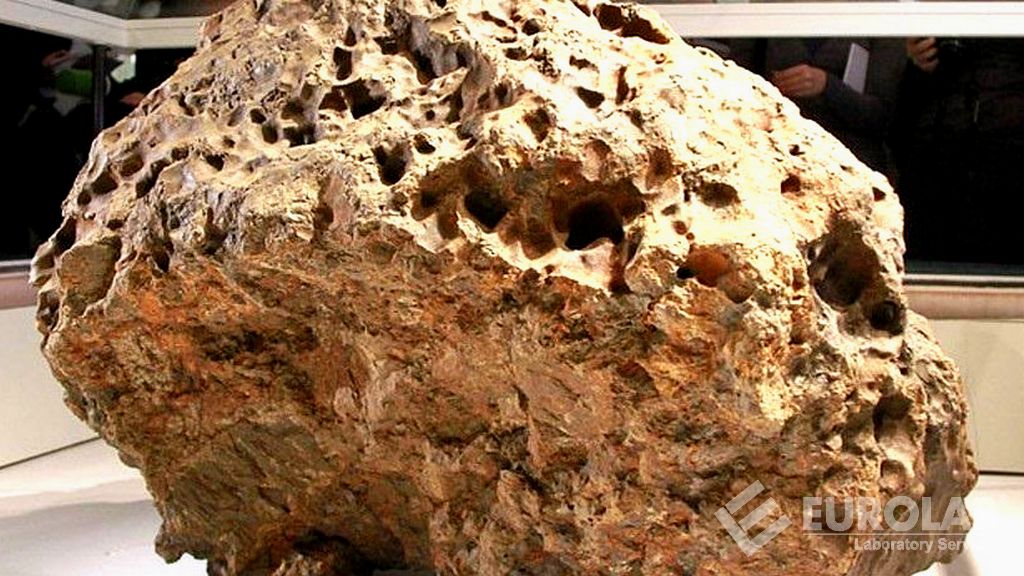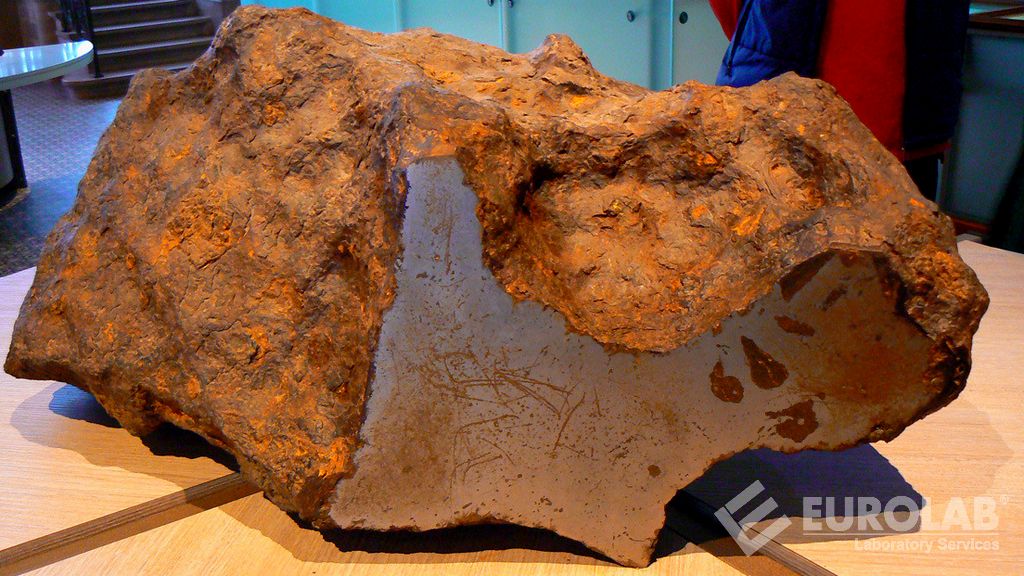

We test the elemental analysis, chemical and characteristic identifications of all foreign bodies coming from outer space with our extensive method infrastructure, we examine hundreds of elements and compounds, and the carbonyl structure of matter by our expert technical engineers.

Meteorite is a term used to describe small pieces of rock that have been broken off from various celestial bodies, such as asteroids or comets. Meteorites sometimes enter the Earth's atmosphere and these meteorites are called meteorites. Meteorites, which are usually the size of a grain of sand and a pebble, burn in the atmosphere. Some meteorites, on the other hand, do not completely burn out after entering the atmosphere and reach the earth and fall to the ground. These meteorites are called meteorites.
It is very important to detect and study celestial bodies, because many celestial bodies, or meteorites, were formed at the same time as our Solar System, millions of years ago. Examining these meteorites can give us very important information about the history and characteristics of the Solar System. The scientific value of meteorites and meteorites is much higher than their commercial value.
To determine whether the rock is a meteorite, data are needed at least for the elements Si, Al, Fe, Mn, Mg, Ca, Na, K, Cr, and preferably Ni and Co.
There are two general types of meteorites; those composed of iron and nickel and known as iron meteorites, and those composed of various elements and known as stony meteorites. Both types usually contain at least the least amount of nickel, and a nickel test can eliminate a large number of objects that are often mistaken for meteorites. This test is inconclusive in an area with nickel-containing rocks.
For chemical identification, Nickel testing is performed and Nickel testing requires four chemicals: Dilute nitric acid, Ammonium hydroxide (ammonia), Alcohol, Dimethyl-glyoxine. A small sample of the material to be tested is ground into a fine powder and dissolved in nitric acid. Then, the results are analyzed by going through many different processes.
Nickel testing is important for some submitted samples, but not all. Finding nickel in the 4 to 30 percent Ni range in an iron sample is a pretty good starting argument for a possible iron meteorite. But not sure, it could also be a foundry casting byproduct.
EUROLAB accepts a wide variety of samples from people who believe or hope to be meteorites, from museums, universities, from various countries and around the world. Some of these - granite, lava, limestones, magnetite, hematite, foundry objects, "slag" by-products, etc., can be easily identified with the microscope in a matter of minutes. Nickel testing is not required for known geological element samples.

For these reasons, it is very important to make a visual diagnosis for meteoroids first. Meteorites tend to look different from the ordinary terrestrial rocks around them. They do not contain the common soil mineral quartz and generally do not contain vesicles. When the gas escapes the cooling of the molten material, it creates tiny pinhole holes or cavities in a rock's surface. Volcanic rock pumice, which is often used to remove calluses in skin care, contains vesicles, which is one of the reasons it is so light in weight. If a suspected meteorite looks like a sponge with many small holes, it is likely volcanic rock or slag of earthly origin. When a meteoroid (a potential meteorite) passes through our atmosphere, tremendous heat is produced by atmospheric pressure. The surface of the rock melts and the air around it burns. As a result of this brief but intense heating, the surface burns and forms a thin, dark crust called a fusion crust.
Meteorites or meteorites literally start to burn in our atmosphere, so they tend to appear darker than the terrestrial rocks around them. Desert varnish forms on the surface of some soil rocks, especially in arid regions, and can easily be mistaken for fusion crust to the untrained eye. True fusion crust does not occur in ground rocks. It is delicate and will wear out over time, but a newly fallen meteorite will exhibit a rich black crust that is very similar to a charcoal briquette.
Nickel is rare on earth, but is almost always found in meteorites. If a suspected meteorite passes the magnet test and looks promising after a visual inspection, we may choose to run a test for nickel.
Most testing labs can analyze the nickel content, but performing such a test would require cutting a modest sample. However, with its technological infrastructure, EUROLAB can perform more complex tests without damaging a sample. EUROLAB uses some of the most high-tech meteorite identification equipment available today.
EUROLAB meteoroid and meteorite tests use accelerated ions to determine the composition of samples with great accuracy. In simple terms, this means that we can explore a sample's chemical makeup without cutting it on a diamond saw. The results appear on a computer screen in a matter of seconds, and a compositional analysis showing somewhere between three and ten percent nickel almost certainly points to a real meteorite.
With its expert team and state-of-the-art laboratories, EUROLAB helps you achieve the fastest and most reliable results in meteor and meteorite analysis and diagnosis services.
To get an appointment, to get more detailed information or to request an evaluation, you can ask us to fill in our form and reach you.